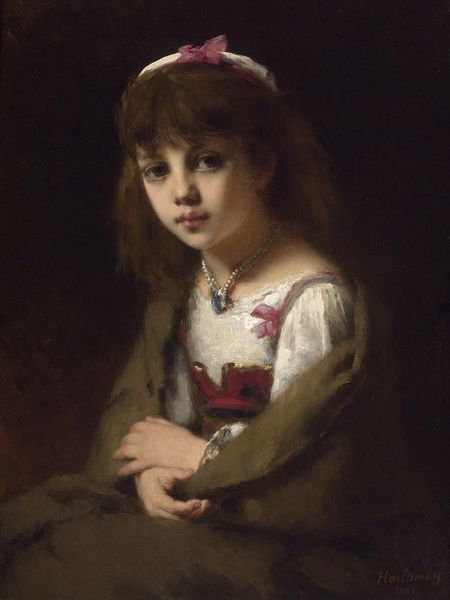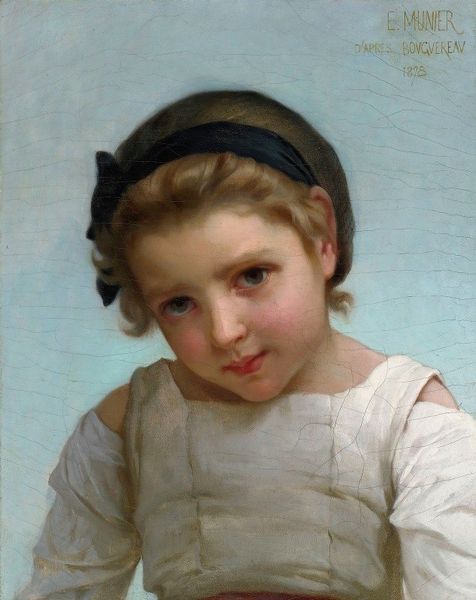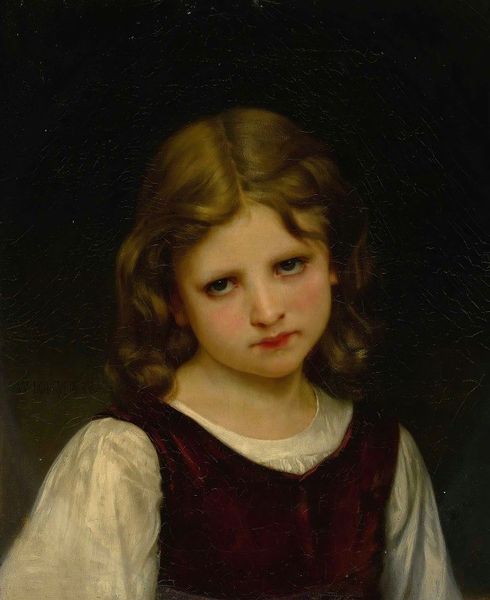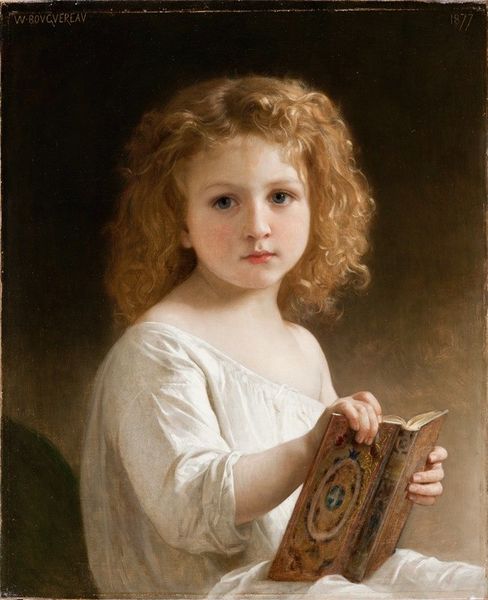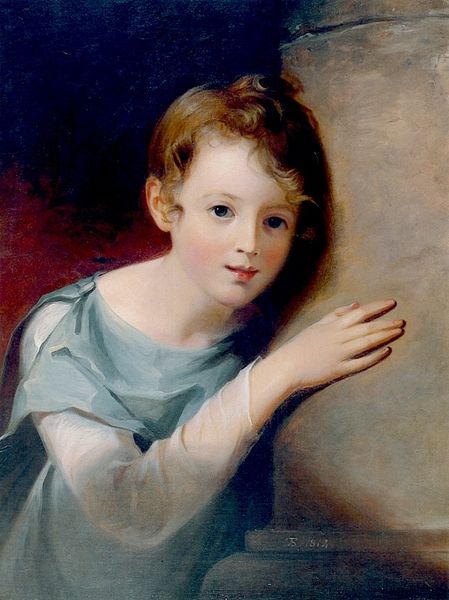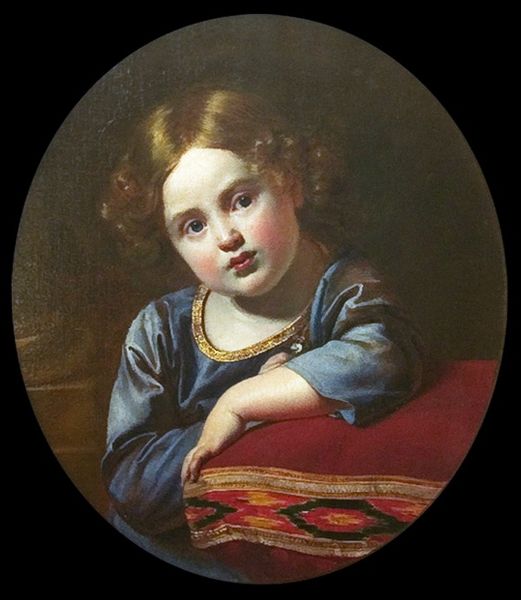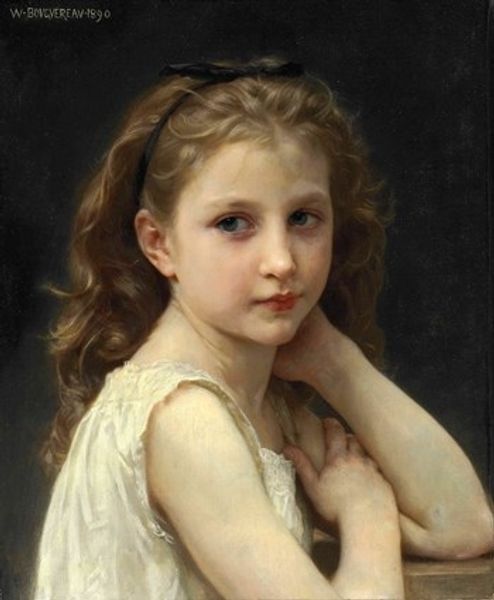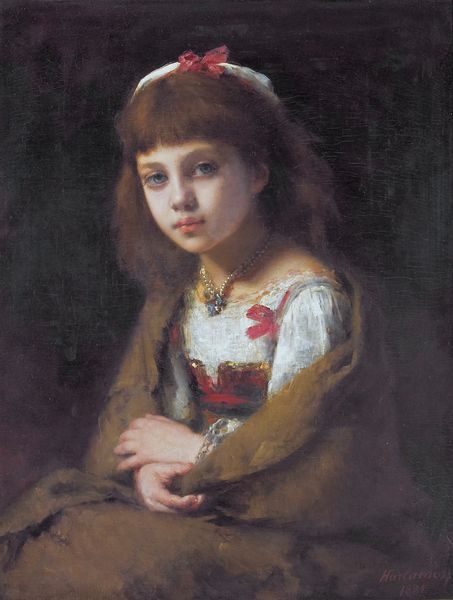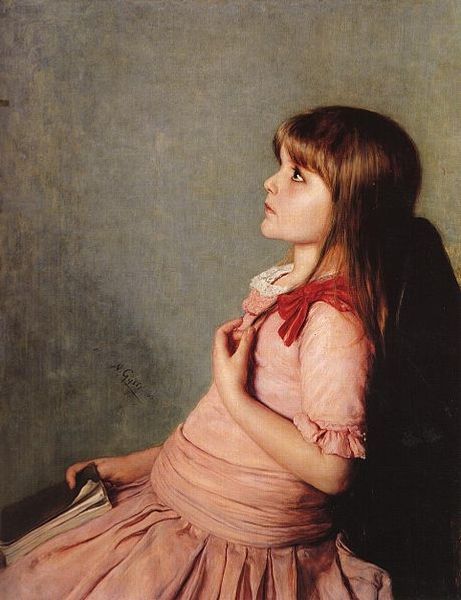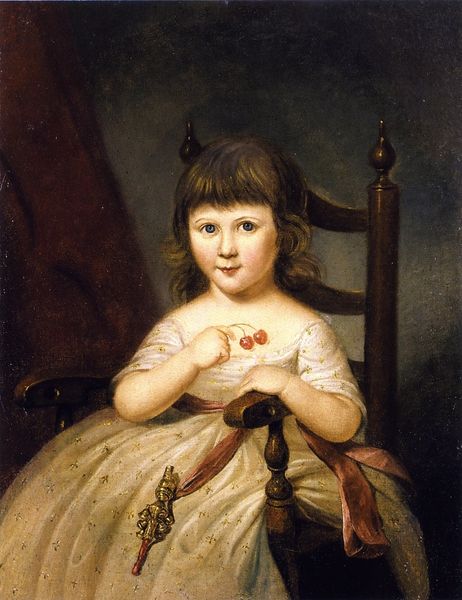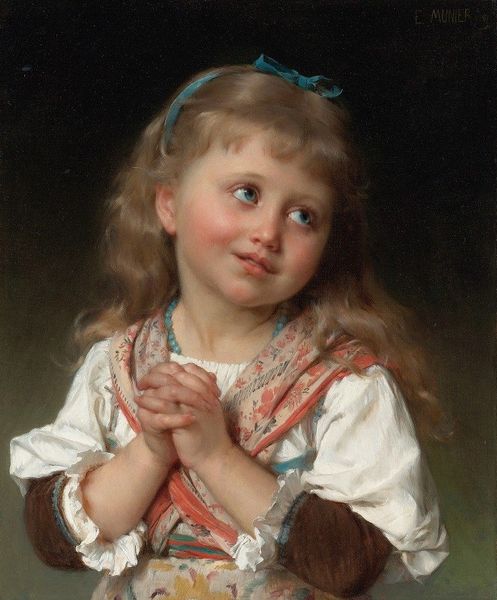
painting, oil-paint
#
portrait
#
painting
#
oil-paint
#
child
#
genre-painting
#
academic-art
#
realism
Copyright: Public domain
Curator: Gazing at us with the most innocent of eyes, is a young girl captured in William Bouguereau's painting, "The Prayer," from 1865. Editor: Aah, her expression... there's such raw vulnerability, almost painful in its sincerity. It makes me wonder, though, about the velvet box supporting her clasped hands; it's a bit too convenient for staging, don't you think? Curator: Possibly, but Bouguereau was a master of infusing his paintings with sentimental narratives. Think of the texture; the velvet of that box almost calls out to be touched, compared with her somewhat plain clothing... what does it mean in contrast to the prayer? Editor: I imagine the labor behind that box, too. The skill of the velvet maker, the dyer creating that saturated blue... I like that he presents it next to her, but its easy to skip over if you focus just on the child. Was this painting commissioned do you think? It’s so clean... almost unreal. Curator: Perhaps. Bouguereau was incredibly popular and produced a prolific number of commissions. His technique created such flawlessly smooth surfaces – I mean, look at her skin, that lighting—almost like porcelain. How does the precision of oil on canvas and that almost obsessive focus on light make you feel? Editor: It speaks to the social expectations and consumer desires of the era. Aristocrats likely purchased these scenes of "innocent" childhood and devotion, displayed as representations of piety...but consider what’s not there. There are no muddy hands, or ragged clothes or signs of labour. It’s about the consumption of the idea of spirituality and class, framed in an idealized bubble. Curator: It's true; these works present a specific, often sanitized, version of reality. Still, isn’t there a tenderness in this depiction that goes beyond mere sentimentality? A universal feeling in the plea? It invites reflection about the values placed upon images, too, no? Editor: Absolutely, its not just a story about values back then but what the modern-day obsession with this kind of "realistic" imagery tells us now. In a way it all gets wrapped together—our emotional reactions and material conditions both past and present. Curator: Precisely, and this painting becomes both mirror and lens, reflecting our complicated humanity across time.
Comments
No comments
Be the first to comment and join the conversation on the ultimate creative platform.
